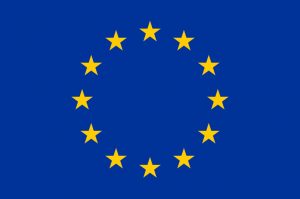Drone Laws in the European Union
Drone regulations and links for people flying drones in the European Union.
European Union Drone Regulations
 According to the European Union Aviation Safety Agency (EASA), flying a drone is legal in the European Union, but we recommend being aware of and compliant with the drone regulations listed below before doing so.
According to the European Union Aviation Safety Agency (EASA), flying a drone is legal in the European Union, but we recommend being aware of and compliant with the drone regulations listed below before doing so.
Effective January 1, 2021, the European Union Aviation Safety Agency has standardized drone regulations throughout its member states. The new regulatory framework replaces existing regulations that were previously passed into law by individual member states. In addition to the 28-member states, Iceland, Switzerland, Lichtenstein, and Norway have also adopted the new EASA drone regulations.
If you’d like to contact the EASA directly before you travel with any questions you might have, here is their contact information: info@easa.europa.eu / +49 221 8999 000

Why fly a drone in Europe? To get great aerial shots like these!
General Rules for Flying a Drone in the European Union
Here are the most important rules to know for flying a drone in the European Union. To see the drone laws for each country (member state) in Europe, visit our master list of drone laws or see the full list of EASA member states located at the end of this page.
Under the new regulations, there are three operational categories that determine drone regulations based on the weight of the drone and the intended operation.
Open Category
A drone can be operated in the “Open “category if:
- The drone has one of the class identification labels 0, 1, 2, 3, or 4.
- The drone was purchased before 1 January 2023, with no class identification label as above.
- The drone has a maximum take-off mass of less than 25 kg (55 lbs).
- The remote pilot keeps the drone at a safe distance away from people.
- The drone will not be operated directly over people unless it has a class identification label or is lighter than 250 g (0.55 lbs). (Please refer to subcategories of operations: A1, A2, and A3 to find out where you can fly with your drone).
- The remote pilot will maintain a visual line of sight (VLOS) or the remote pilot will be assisted by a UA observer.
- The remote pilot will not operate the drone above 120m (400ft).
- The drone will not carry any dangerous goods and will not drop any material.
Special Travel Considerations for Foreigners
If you’re traveling within the European Union and want to bring your drone, the EASA lists these special considerations for foreigners who want to fly drones:
Open Category:
- You must register with the National Aviation Authority (NAA) of the first EU country where you intend to fly your drone.
- Your registration number issued by the NAA must be displayed with a sticker on all of your drones and then upload it into the ‘Remote Identification System’ of your drone.
- Your registration is valid for use in all EASA member states.
- You must follow drone regulations that are specific to each member state.
Specific Category:
- In addition to the requirements laid out above, if you intend to operate in the Specific Category (more info on this below), you must submit a declaration for a standard scenario or apply for an operational authorization to the NAA Member State(s) where you registered.
Open Subcategories
The Open Category is split up into three additional subcategories, which bring additional rules. Subcategory determination is based on the class identification label and weight of the drone.
Drones without class identification labels may fly until 1st of January 2023, please refer to this page for additional information on flying without CE Class Markings.
A drone can be operated in the “Open “ A1 category if:
- The drone is marked with class identification label 0 or 1.
- If marked as C1, the drone operator must be registered with the EASA.
- A C0 labeled drones max takeoff weight does not exceed 250g (0.55 lbs).
- A C1 labeled drones max takeoff weight does not exceed 900g (1.98 lbs).
- Flight speed does not exceed 19 m/s (42 mph).
- The drone is not operated over crowds of people or in areas where drone operations are prohibited in a member state.
A drone can be operated in the “Open “ A2 category if:
- The drone is marked with class identification label 2.
- The drone operator is registered with EASA and is at least 16 years of age.
- A C2 labeled drones max takeoff weight does not exceed 4kg (8.81 lbs).
- The drone is not operated over crowds of people or in areas where drone operations are prohibited in a member state.
- Flights are kept a horizontal distance of 30 m (98 ft) away from uninvolved people.
A drone can be operated in the “Open “ A3 category if:
- The drone is marked with class identification label 3 or 4.
- The drone operator is registered with EASA and is at least 16 years of age.
- A C3 or C4 labeled drones max takeoff weight does not exceed 4kg (8.81 lbs).
- Flights are kept away from people and a minimum distance of 150 m (492 ft) away from urban areas.
Specific Category
The Specific Category is reserved for drones that do not meet the requirements laid out above within the Open Category due to their increased level of operational risk.
A drone can be operated in the Specific Category if:
- The remote pilot operates under a Standard Scenario issued by EASA or their National Aviation Authority (NAA).
- The operation is under a Standard Scenario, a declaration must also be submitted to the NAA.
- The operation is not conducted under a Standard Scenario, the remote pilot must conduct a predefined risk assessment (PDRA) prior to the operation and receive approval from the NAA.
- The operation is conducted by a remote pilot who has been granted a Light UAS Operator Certificate (LUC).
Certified Category
The Certified Category is used for drone operations that carry a high risk. This category is for large drones, that present inherent risk if something were to go wrong.
Drone operations should be classified in the Certified Category when the following conditions are met:
- The drone is certified pursuant to points (a), (b), and (c) of paragraph 1 of Article 40 of Delegated Regulation (EU) 2019/945.
- The operation is conducted under any of the conditions listed below:
- Over large groups of people.
- Involves the transport of humans.
- Involves transporting dangerous goods that could result in a high risk in the event of an accident.
- Operations should be classified as UAS operations in the Certified Category based on the risk assessment provided for in Article 11, considers that the risk of the operation cannot be adequately mitigated without the certification of the UAS and of the UAS operator and, where applicable, without the licensing of the remote pilot.
For more information on drone laws in the European Union, see this page on the EASA website.
Know something we don’t about drone laws in the European Union? Send us an email at support[at]uavcoach[dot]com. We are not international aviation attorneys and do our best to keep this page up-to-date for drone pilots, but the reality is that given the pace of the small unmanned aerial system (sUAS) industry and how governments are responding, drone regulations in the U.S. can change throughout the year, and those changes can be hard to track. If we missed something, please reach out to let us know.
Certification Requirements for Flying a Drone in the European Union
To fly a drone in an EASA member state, you must take an online training course which is administered through each member state. The only exception to the training requirement is if the drone is classified as a C0 drone, no training is required for operating these light drones.
Class CO Requirements:
- Remote pilots must be familiar with the manufacturer’s manual/instructions for operating the drone.
Training Requirements for the Open Category (Subcategories A1 & A3)
- Remote pilots must be familiar with the manufacturer’s manual/instructions for operating the drone.
- Complete an online training course provided by the National Aviation Authority within that member state.
- Complete an online theoretical knowledge examination (at the end of the online training) before they can fly a drone.
Remote pilots who need to operate under subcategory A2 will be required to take additional steps in order to be compliant with training requirements. In addition to the above, you must:
- Complete practical training (in an area that does not pose risk to others) of yourself in order to familiarise yourself with the drone and ensure you reach a good level of control.
- Complete an additional theoretical knowledge examination that will be provided in a facility identified by the National Aviation Authority. The NAA will issue a ‘Certificate of Remote Pilot Competency’ upon completion of the exam.
The test consists of 30 multiple choice questions testing the pilot’s knowledge on mitigation of ground risks, meteorology, and the drone’s flight performance.
Training Requirements for the Specific Category
Training for the Specific Category will vary depending on the intended operation. The requirements listed below only apply under a standard scenario.
- The remote pilot must hold a Certificate of Remote Pilot Theoretical Knowledge.
- The remote pilot must also hold an accreditation of completion of the STS-01 practical skill training.
Training Requirements for the Certified Category
Certified Category operations represent the greatest degree of risk and therefore the proper certification and training requirements have not been decided yet as current aviation regulations will need to be amended. The first proposal for amendment will be published on the EASA website in 2021.
Want to get a feel for the kind of footage you could get flying a drone in the European Union? Here you go:
Drone Laws, Organized by Country (Member States)
Countries (Member States) are organized alphabetically, and each link will direct you to a separate page that highlights important drone law links for that particular country.
A B C D E F G H I J K L M N O P Q R S T U V W X Y Z
A
Austria
C
Croatia
Cyprus
Czech Republic
D
Denmark
E
Estonia
H
Hungary
L
Latvia
Liechtenstein
Lithuania
Luxembourg
M
Malta
R
Romania
S
Slovakia
Slovenia
Spain
Sweden
Switzerland